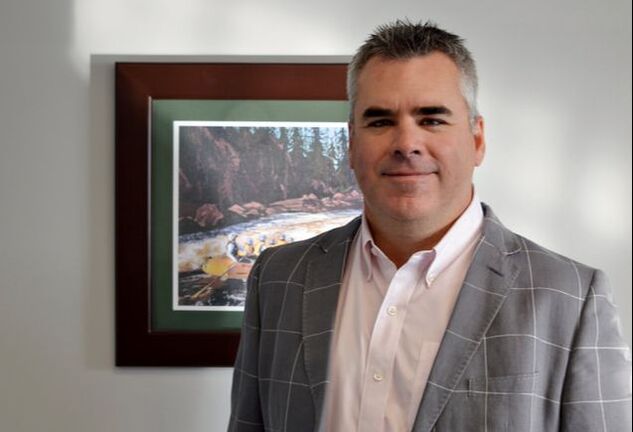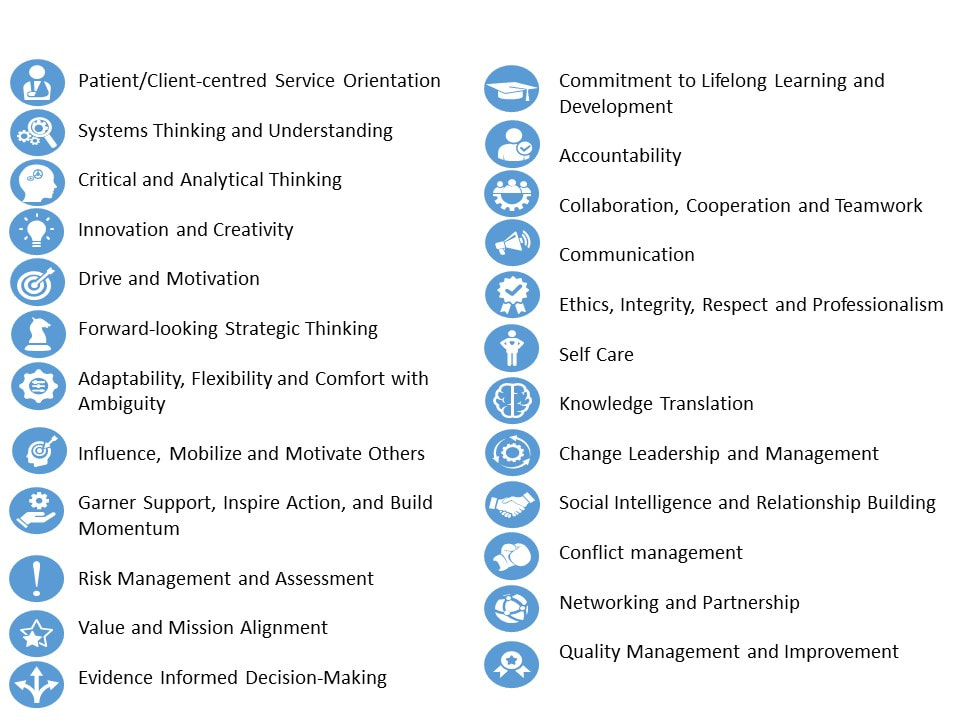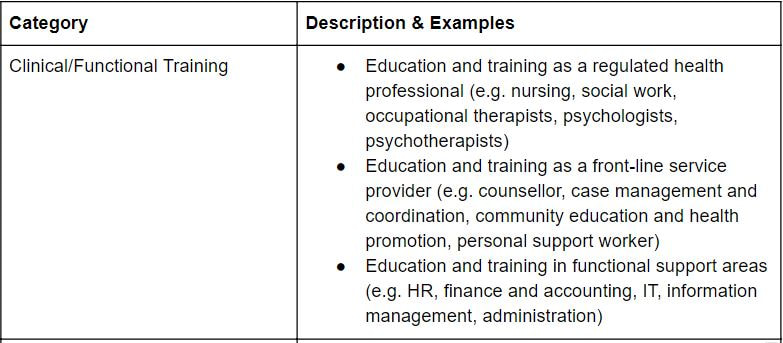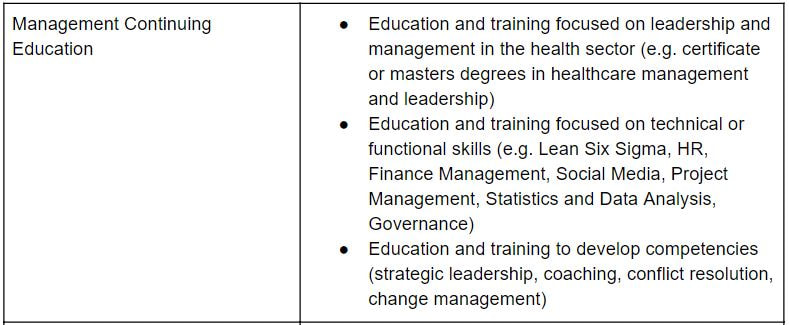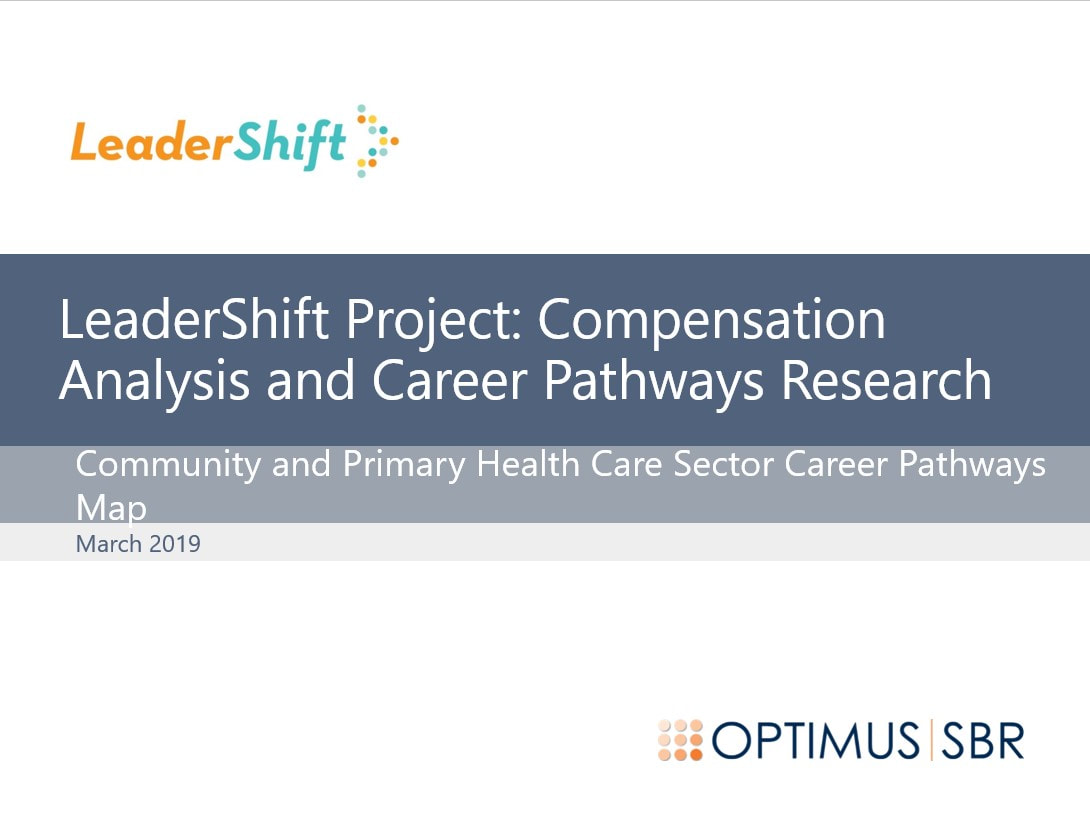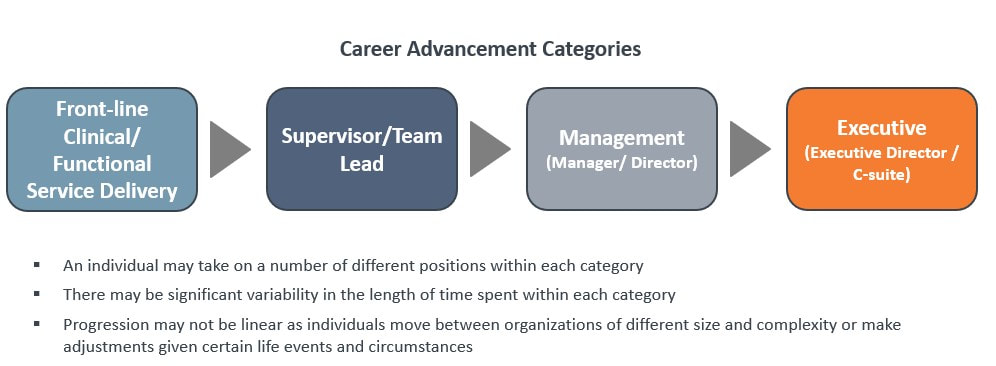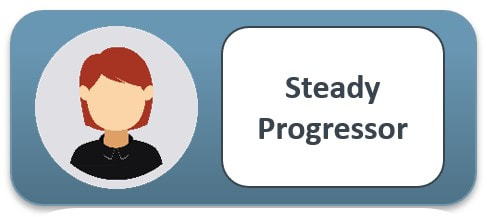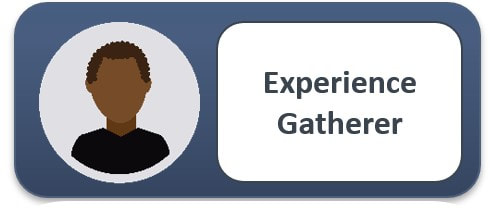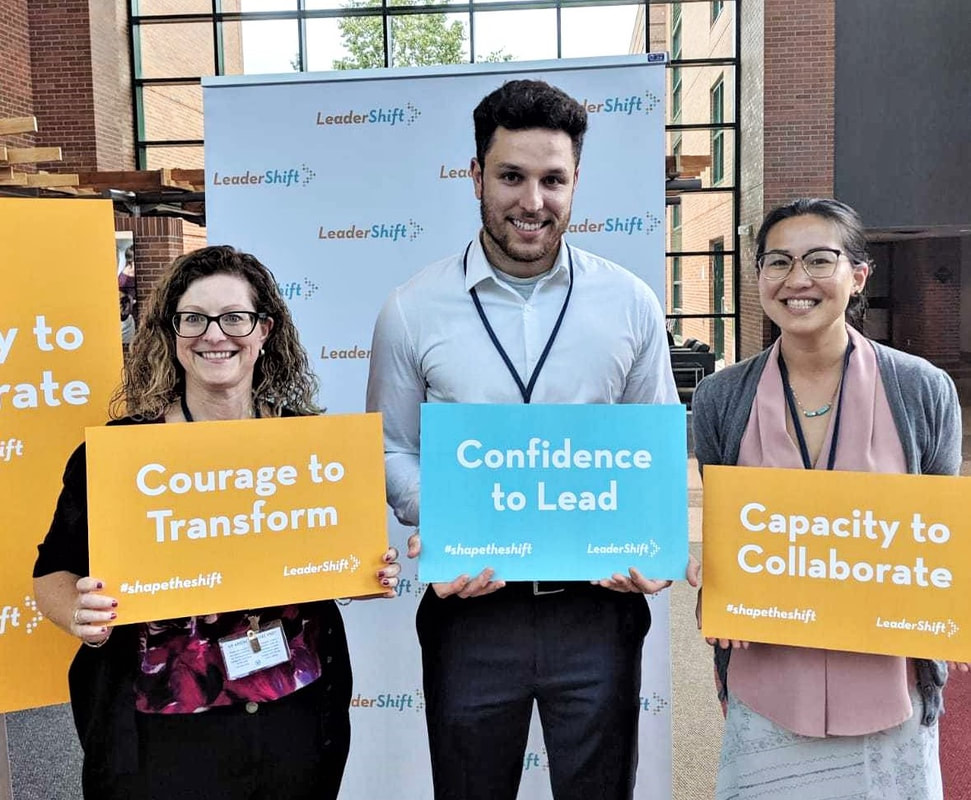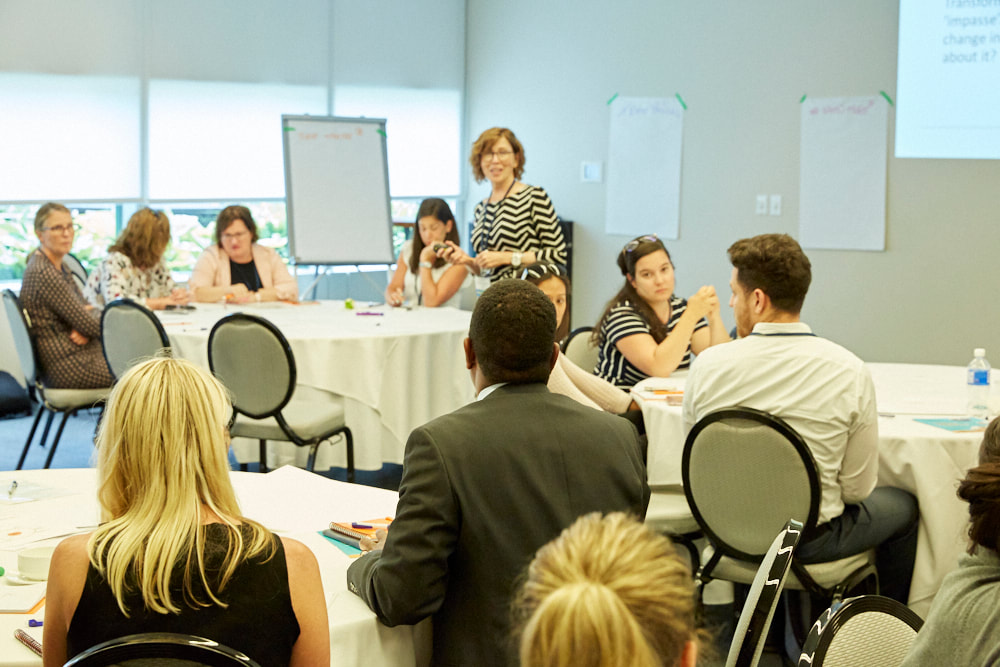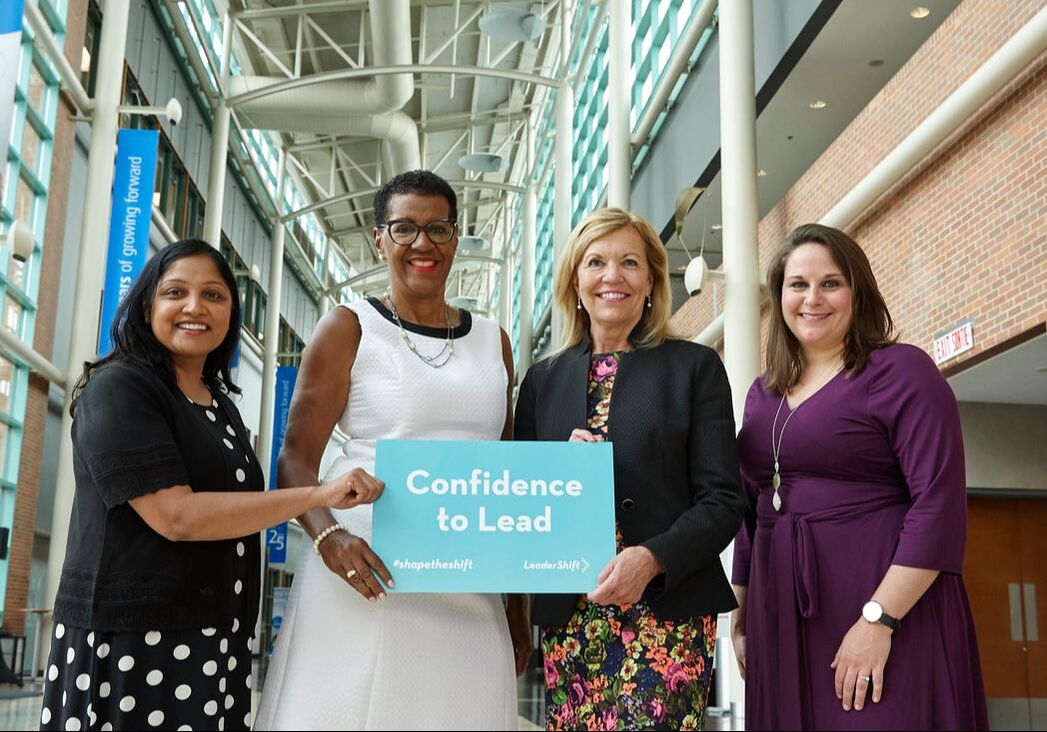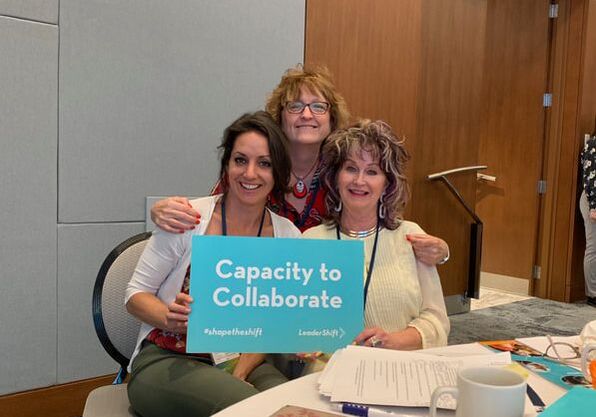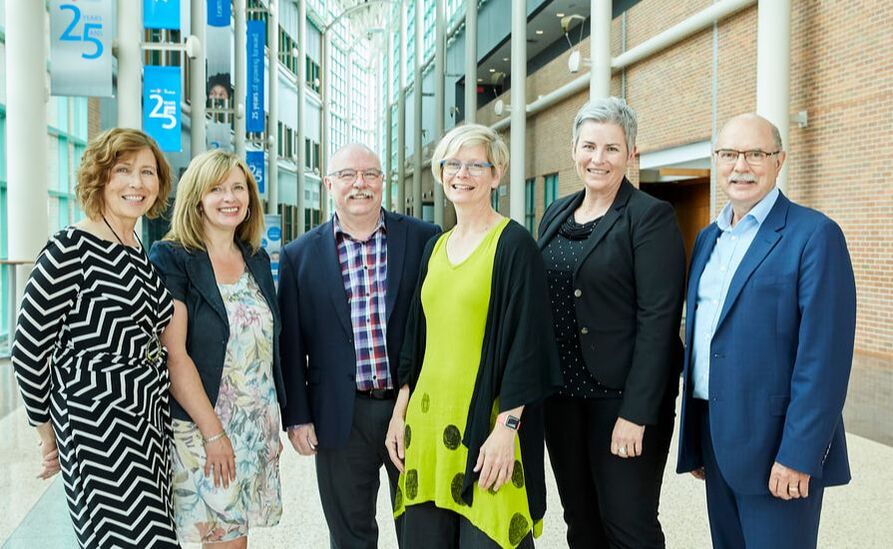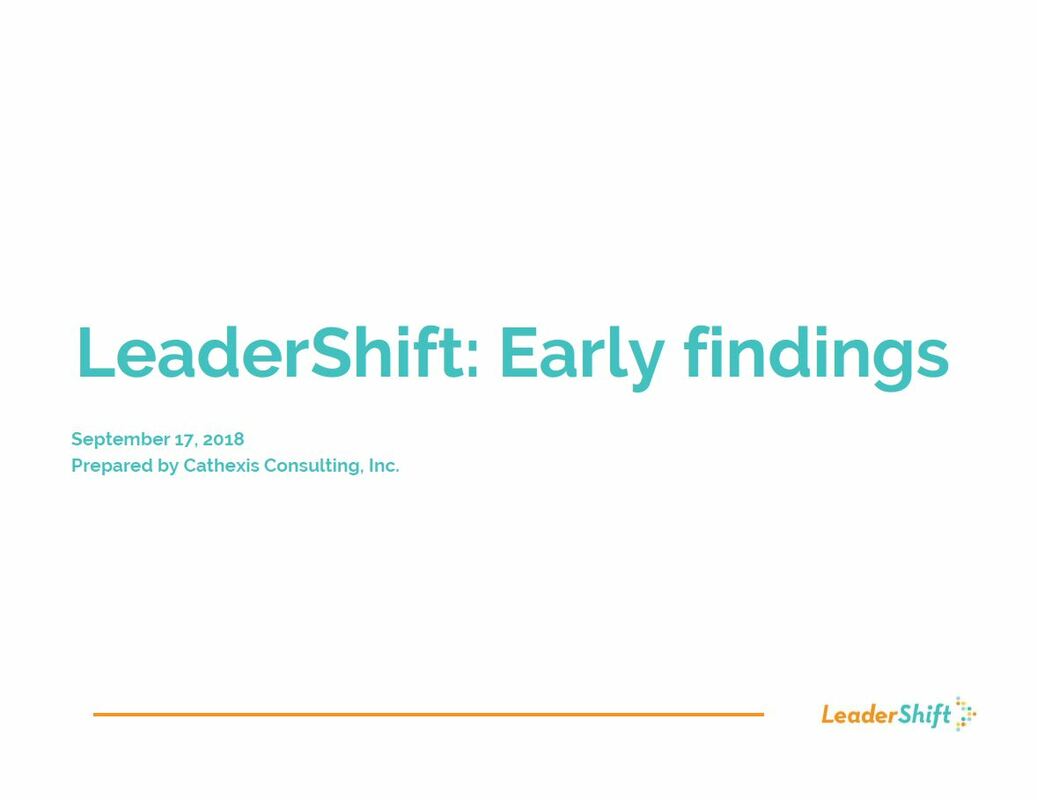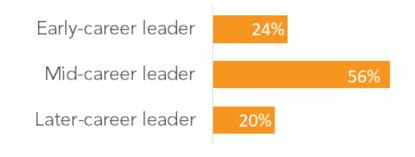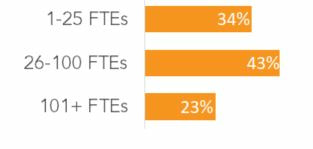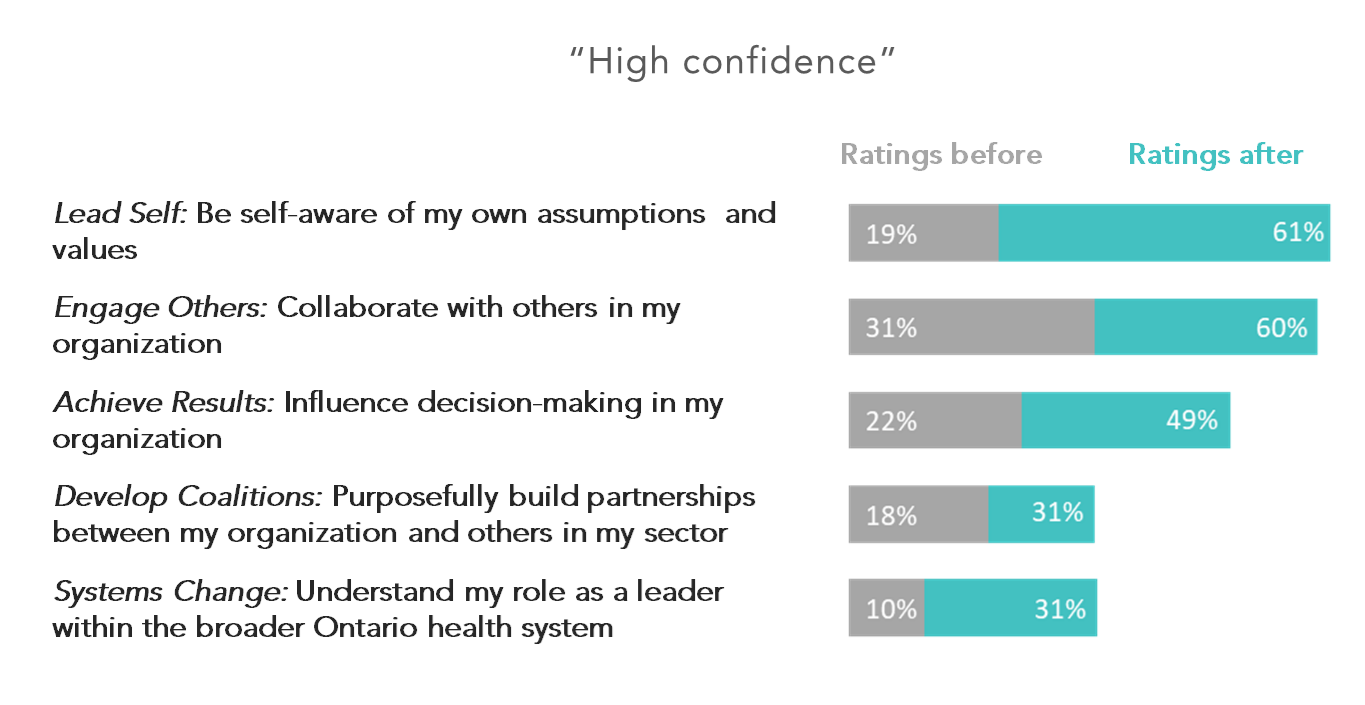|
Two decades of industry experience couldn’t prepare Perry for a global health pandemic Download Press Release Here TORONTO, August 11, 2020 -- Steve Perry didn’t just follow a career path, he found his vocation. Perry, now three years into his role as chief executive officer of Carefor Health & Community Services, has been working in community-based healthcare for over 20 years. He stumbled somewhat accidentally into the industry as a young adult, but quickly fell in love with the ability to directly help a community he cares so deeply for. “I think a big thing in doing what we do, is that you get to see the impact of what you do every single day,” he said. Carefor is a non-profit home health care and community support services organization operating in the entire Eastern Ontario region, and a member of the Ontario Community Support Association. The organization offers a variety of services and programs in client homes, in the broader community, at several of its residential care facilities (including hospice) and at nursing clinics. Perry, a loving husband and father of two, settled comfortably into his role as a leader by personalizing his work, aiming to treat everyone — from clients to employees and everyone in between — as he would want his family to be treated. However, leading a staff of 1,600 through a global health pandemic was not something anticipated so early in his tenure as CEO. So, at a time when leadership was of utmost importance, Perry utilized his team. “I feel a good leader listens to everyone,” said Perry. “As a leadership team we have always really supported one another.” And that support is critical, especially when dealing with society’s most vulnerable. Perry and his team began monitoring the pace of the pandemic long before it reached Ontario, and some tough decisions were made early on. Weekly meetings turned daily, and together they decided to suspend some programs, redeploy staff to remote working arrangements and to close all of their care facilities to non-essential visitors before it was mandated by the government. “My perspective was, I would rather us be criticised for doing everything we could to keep people safe, even if it meant restricting movement and restricting access for people,” he said. Simultaneously, Perry’s biggest concern — and subsequently his number one priority — became acquiring enough personal protective equipment (PPE) for the organization. “Procuring and securing PPE was a huge, huge challenge in a highly anxious environment,” said Perry. “You were willing to do just about anything to get that PPE for your staff and your clients, but everyone on the planet was in the same boat.” With traditional supply chains shot, Perry leveraged non-traditional supply chains in order to equip his team with the equipment necessary to keep them safe. “Attempting to acquire PPE in the midst of a global pandemic experiencing worldwide shortages was incredibly stressful... Particularly knowing that our team was relying on us to acquire the equipment they needed and to keep them and our clients safe,” said Perry. Now, as restrictions ease and Ontario begins to open up, Perry is determined to not let his guard down. On any given day, Carefor is procuring thousands of pieces of protective equipment, and at times supporting other organizations to have access to sufficient amounts as well. “If you look at the profiles of those who are the most at-risk, it’s our client base,” he said. “As a team, we are choosing not to look at it in terms of fear, but as motivation. We need to be proactive and not lose sight or get too comfortable with our PPE levels as things move forward.” For Perry, effective leadership, especially in uncertain times, is calculated. “It’s important to act decisively, knowing you are working with imperfect information,” said Perry. “Act with a sense of urgency, but also with calmness and a team approach.” He said that is what really helped his team keep their “A-Game” over the past few months. Perry knows he is far from the frontlines, and is thankful for the dedicated workers who surround him. “Everything we do everyday can make a difference in somebody’s life,” he said. “That’s really what motivates me. To equip our team with the resources they need to do the really good work they do everyday.” Moving forward — even with so much still unknown — Perry hopes to continue providing his staff and clients with the safety and peace of mind they deserve. “I am defined in no small degree by what I do and who I do it for,” he said. “Yes, it’s been an incredibly challenging time, but everyday is a new day and there have been an awful lot of silver linings in all of this as well.” - 30 - About OCSA Ontario Community Support Association (OCSA) represents close to 230 not-for-profit organizations that provide home care and community support services that help seniors and people with disabilities live independently in their own homes and communities for as long as possible. These compassionate and cost-effective services improve quality of life and prevent unnecessary hospitalizations, emergency room visits and premature institutionalization. They are the key to a sustainable health care system for Ontario. For more information, visit: www.ocsa.on.ca and https://twitter.com/OCSAtweets. For interviews and information requests please contact: Sandra Kahale – Media Coordinator Ontario Community Support Association 647-997-1800 [email protected] About Carefor Carefor is a local not-for-profit charity that provides home health care and community support services across Eastern Ontario. Whether in the home, in the community, at care facilities or one of our clinics, our 1,500 staff are part of the circle of care that is tailored to our clients’ needs. For more information, please visit carefor.ca. Trevor Eggleton Manager – Communications, Marketing & Fundraising Carefor Health & Community Services 613-793-6566 [email protected] What Really Matters in Community & Primary Health Care Leaders in community and primary health care are as varied as the organizations they work for and the people they serve. Still, they share some key competencies that are essential to success across our ecosystem. An independent evaluation by consulting firm, Optimus, shed some light on what those are, and how to develop them through formal and informal channels. Here’s a quick summary: These competencies are key for current and emerging leaders, and their development is an essential part of the pathways that lead to leadership roles. Looking for ways to develop and enhance your key competencies? Check out our post on top tools, resources, and supports for emerging leaders, or the practical leadership tips in our Applied Leadership e-learning series. Current and emerging leaders in community and primary health care rely on a wide variety of tools, supports, and resources to help them develop and enhance the key competencies they need to succeed. Developing those key competencies involves a combination of formal and informal career progression, advancement, and development opportunities. The consulting firm Optimus|SBR engaged with leaders in our sector to find out what formal and informal tools, supports, and resources leaders are using and have used. Here are the results. Formal Development When we think of development opportunities, we often think of formal ones like these: Informal Development Informal and non-traditional development opportunities, such as special projects, committee membership, or temporary secondments are increasingly relevant to engaging and retaining emerging leaders. Independent Report Shows Where Leaders are Excelling A recent study by consulting firm, Optimus, shows that there’s plenty to celebrate when it comes to leaders and leadership in community and primary health care. Through stakeholder interviews, focus groups, and data/document reviews, Optimus identified five key strengths in our sector that show we’re well-positioned to embrace the future. Leveraging and building on these five strengths will help us rise to the challenge of transformation and embrace new, collaborative ways of working across the health system. 1. Accomplished and Committed Senior Leaders Across community and primary health care, many experienced senior leaders have a long tenure and are extremely knowledgeable, which benefits not only their own organizations but the ecosystem as a whole. What’s more, experienced senior leaders generally plan to stay in community and primary health care for the rest of their careers, which means our sectors, and the system overall, will continue to benefit from their insights and expertise into the future. 2. Passion for the Work Senior and emerging leaders in community and primary health care are passionate about their work, and it shows. Optimus found that leaders are motivated by having an impact within communities, and driven by the diversity, complexity and challenges of the work. They also value the opportunities to develop strong relationships and to live their commitment to mission and values-oriented work. 3. Readiness to Collaborate and Partner Leaders across the community and primary health care ecosystem recognize and are receptive to the importance of collaboration and partnerships for enhancing care and services for patients and clients. LeaderShift has built on this strength, helping 500+ current and emerging leaders become more confident, more collaborative, and more system-oriented. We’ve also connected leaders across our ecosystems to each other in new ways. 4. Eagerness to Learn and Develop Continuous learning and development are seen as valuable among leaders across community and primary health care, which is something we’ve certainly seen in the enthusiastic response to LeaderShift and the learning opportunities it provides. Across our sectors, leaders clearly see formal education as important. They also prioritize creating strong cultures of mentorship and coaching within their organizations to support and develop emerging leaders. 5. Motivated to Build Sector Reputation Leaders in community and primary health care are invested in our ecosystems. They’re motivated to work toward building a stronger and more integrated community and primary health care sector. And they actively seek out opportunities to enhance the sector’s impact and profile. Building on these five strengths, our sectors are well-positioned to thrive, together, in the current climate of transformation. We’re also well-positioned to grow into areas of opportunity that Optimus identified for our sectors, such as formalizing mentorship and learning, opening up more leadership opportunities, including informal ones, and evolving job structures to reflect the different needs and priorities of emerging leaders. Help Shape the Shift Shifts in leadership in community and primary health care are being shaped at the system, organizational, and individual levels. Use the resources on this site to help you build and enhance the strengths you already have and add new ones. Not sure where to begin? Check out the practical, everyday leadership tips in our Applied Leadership e-learning series. What does the road to leadership look like in the community and primary health care ecosystem? Working with the consulting firm, Optimus|SBR, we set out to answer that question and better understand the career pathways in our ecosystems. What we found, not surprisingly, is that there is significant variation in the career pathways of leaders in the community and primary health care sector. That said, most leaders fall into one of three main categories: Steady Progressors, Career Switchers, and Experience Gatherers. We also found that, whatever category they may fall into, all leaders move along career paths that require similar key competencies for success. Leaders leverage tools, supports, and resources to develop or enhance their key competencies as they move through their career progression. Steady Progressors grow from front line service delivery or functional areas through increasing levels of responsibility and leadership. They usually spend their career working within the same sub- sector, often with the same organization. These leaders often have deep subject matter expertise in a particular health domain. Career Switchers transition into the community and primary health care sector after starting their career in an unrelated sector (e.g., financial services, technology) often after a life- event or another trigger (e.g., lived experience, sick parent or child, starting a family). They often have leadership experience and management skills but may require additional support to learn about the community and primary health care sector. They may move into front- line service delivery or directly into management positions. Experience Gatherers move between the community and primary health care sector and broader health domains and adjacent sectors (e.g., acute care, long-term care, education, social services).
These individuals spend their career taking on increasingly more complex roles and responsibilities, returning to the community and primary health care sector as an executive. They often have valuable system-level perspective on the health system and help transfer knowledge and values between different sectors and domains. Stronger Together Just as a diversity of experiences, perspectives, and backgrounds enrich our ecosystem, so does a diversity of career pathways. Steady Progressors may bring a depth of subject matter expertise, Career Switchers can offer fresh perspectives and new ways of thinking, and Experience Gatherers may be particularly well-positioned to lead system transformation. What the Optimus|SBR research makes clear is that, from the point of view of organizational and system-wide development, our sectors are best served by recognizing, supporting, and facilitating a variety of pathways to leadership, as each offers something unique to the leadership pool. This research also suggests that there is value in thinking about leadership from a system-wide perspective. While one organization may feel the loss when an Experience Gatherer moves into another role in another organization, the system overall benefits from having people with experience and relationships across the board. Want to see detailed diagrams of each of the three career pathways? Click here to read the full report. In January 2018, the LeaderShift project received 3 years of funding to start helping leaders in community and primary health care build their capacity and get collaboration-ready through an innovative, cross-sector leadership development project. Our results have been great so far. But numbers don’t tell the human side of the LeaderShift story. Below, meet five current and emerging leaders from across our sub-sectors to learn how LeaderShift has shifted them. (Names and details have been changed to protect privacy.) Meet Elizabeth “I feel more confident in managing my board now.” Elizabeth has been the executive director of an addictions and mental health organization for two years. Attending the LEADS Learning Series through LeaderShift has helped her confirm that she can be herself as a leader, rather than trying to fit herself into somebody else’s leadership style. Her newfound confidence has been especially impactful in her interactions with her Board. “I have a challenging board, but I’ve been able to challenge them and feel more confident in where we’re going strategically. I can push back a bit.” Meeting others in her sector also helped Elizabeth recognize that tension between an Executive Director and a Board of Directors is normal, reflecting the nature of the roles. “It’s not about me, it’s about the role of the ED and the role of the board of directors. Their role has purpose. It’s not about taking things personally.” LeaderShift has helped Elizabeth feel more confident at leadership tables. “I’m speaking out more (now).” A close colleague, Nora, noticed the change, commenting that “Elizabeth is brave, and it’s neat to see. She’s been able to build support for change in this difficult context slowly, but sure, and I think that speaks to her leadership abilities.” Meet Melissa “Sometimes we get into a leadership role, and we’re not always given a chance to develop those skills or connect with other leaders… Melissa has been a manager in a health services organization in Northern Ontario for about four years. LeaderShift has helped her reflect on her organization and its strategy so that changes have more traction and a bigger impact. “I ask different questions now…” she says. She’s also embracing her own, authentic leadership style. “If I’m transparent in what I’m doing, it helps the authenticity. I wasn’t implementing change for the sake of it -- I took the time to have all the answers and think about what we were doing. They saw that I was genuinely on board and they saw that authenticity.” To extend the impact of what she learned from LeaderShift, Melissa’s been sharing it, especially regarding communication. Her supervisor recognizes how helpful that’s been, noting “It helps us all to speak the same language.” Meet Rachel “It just opened my mind to...what strengths I have. Rachel is a Registered Nurse working in primary care and has been with her organization for 18 years. She is a staff nurse, but also acts as the nursing team facilitator, which puts her at monthly management meetings, representing nursing. Recently, Michelle suggested changing the way the clinic assigns patient rooms. When the idea met with some resistance, Michelle advocated for it and followed up, rather than simply leaving it to management as she would have in the past. Rachel’s manager, Michelle, notes that while Michelle has always had strong leadership skills, she’s really noticed a change in her confidence and the initiative she’s been showing in taking on more management responsibilities. For her part, Michelle has been actively sharing insights and ideas from the LEADS Learning Series with her colleagues, and advocating for similar training and development opportunities for medical receptionists. Meet Bridget “It helps you and your organization to be the best that you can be.” Bridget has been the Executive Director of a Family Health Team in Northern Ontario since 2011. Since attending LeaderShift, her confidence has sky-rocketed, which she attributes to having the chance to reflect on her values as a leader and why her work matters. “Once you know that, you can make more confident steps in what you’re doing.” Madelyn, a board member who works closely with Bridget, has taken notice, explaining that this increased confidence has been especially apparent in more challenging situations, including staffing challenges. “It brings an extra level of maturity and strategic planning to the organization.” Since completing the LEADS Learning Series, Bridget has been more focused on collaboration with stakeholders outside of her own organization, and on leading system change. “We don’t have to have the answers ourselves,” she says, “but collectively we do.” Bridget was so inspired by her experience that she’s taken a facilitation course through LEADS and plans to use the LEADS framework in her organization’s strategic planning going forward. Meet Sophia “Previously I declined any opportunity to advance… I didn’t feel that I was an equal before, and now I do.” Sophia is the HR Director at a mental health organization -- a role that she declined for nearly 10 years, then finally stepped into a few months after completing the LEADS Learning Series.
Like other LeaderShift grads, she was empowered and inspired by the idea that there are many different leadership styles. “I found that so powerful -- you don’t have to become a certain type of leader to be successful, but you can harness your own style and be a unique leader.” “That confidence allows me to move forward without needing to have my work reaffirmed by someone else. I don’t doubt what I need to do to be an effective leader.” Ellen, the organization’s Clinical Director, notes that Sophie’s confidence has also made her more forward thinking. “Because she has built partnerships, she draws on the expertise of her peers instead of doing it for herself. And she is certainly not afraid to bring concerns forward.” Thanks to Sophia’s LeaderShift experience, and the confidence it gave her, HR is now an integral part of every discussion at the director table. It’s Not Too Late to Start a LeaderShift While the opportunity to participate in the LEADS Learning Series is now closed, you can still access our Health System Leaders Webinar Series and Applied Leadership e-learning series. More Strategic, More Confident Leaders: Report Shows LeaderShift is Having a Powerful Impact9/4/2019
According to our latest independent evaluation, LeaderShift is right on track with its bold initiative to develop leadership capacity, ignite cross-sector collaboration, and shape the future of health care throughout Ontario. Across community and primary health care, LeaderShift is equipping current and emerging leaders to thrive in environments that require new ways of thinking, working with, and relating to one another. With the announcement of the government’s new Ontario Health Teams, the timing is perfect. Below is an update on how LeaderShift is doing, based on the findings of an independent evaluation. What We’ve Delivered: LeaderShift at a Glance
Who We’ve Reached LeaderShift has kept up the momentum from the interim report, reaching our intended audience and getting great representation from all sub-sectors in the LEADS Learning Series.
We’ve met or exceeded our targets on all of these fronts, working closely and collaboratively across sub-sectors and with key partners and stakeholders. What Impact We’ve Had on Leaders “I found that so powerful –you don’t have to become a certain type of leader to be successful, but you can harness your own style and be a unique leader.” By supporting community and primary health care leaders in developing through the LEADS Learning Series and other LeaderShift initiatives, we’ve helped them build capacity and confidence in 17 key leadership domains. In fact, our independent evaluators found that LEADS graduates doubled or nearly doubled their confidence in all leadership domains:
But it’s not just about the numbers. Read what LeaderShift grads said about the impact leadership development has had on them: “As a relatively new senior leader..., I have sometimes not felt very confident. This workshop gave me more confidence and has given me more of a voice to speak up and express my opinion... I am less concerned about being liked and more confident to express myself and my rationale in a transparent way.” As a result of LeaderShift, 500+ current and emerging leaders are more confident, collaborative, system-oriented leaders. They’re also connected to each other in new ways, and poised to thrive together, in the current climate of transformation. “I feel I have been given a better foundation for how to direct my ideas and work. How I should be thinking about the work that I do… I think about different things I learned as I go to meetings and I try to apply them. I feel like I have tools that I can use.” “Since LeaderShift, I am more confident within my role, setting the stage for change, and how I lead my team through difficult conversations, situations and change. This has lead to a more enjoyable work environment not only for myself, but the entire agency.” Ripple Effects: LeaderShift’s Impact on Organizations While it’s still too early to fully assess the impact that confident, collaboration-ready leaders will have on organizations and systems as they transform themselves and their roles, we know that employers are already seeing a difference. Employers describe LeaderShift grads as more confident and more strategic. And they notice that after completing the LEADS Learning Series, grads work more collaboratively and take on larger or more complex projects than they did before. “[Name] has always displayed really good leadership abilities. (LeaderShift) has given her more confidence. I find that she is offering her help a lot more in terms of things that would usually fall under management.” It’s likely that LeaderShift is also supporting collaboration across our ecosystem. In a six-month follow-up survey, participants in earlier cohorts of the LEADS Learning Series indicated they were still in touch with classmates. We’ll hear more about those relationships, and about other longer-term collaborative impacts of LeaderShift, in 2020, after planned longer-term follow-ups. Interested in reading more about five LeaderShift grads who are making a difference? Click here.
You Can Still Help Shape the Shift While the opportunity to participate in the LEADS Learning Series is now closed, you’ll find lots of resources on this site to help you develop the capacity, confidence, and connections to lead health care into the future. Not sure where to begin? Try our Health System Leaders Webinar Series, which covers key policies and systems that shape the community and primary health care ecosystem. Or dig into some practical, everyday leadership topics with our Applied Leadership e-learning series. On July 11, 2019, approximately 200 senior health leaders from around the province gathered to connect and collaborate with their peers at the one-day LeaderShift Conference, held at the BMO Institute for Learning in Toronto. The atmosphere was electric, with connections, learning, and sharing lighting up both the conference room and the Twitterverse, where #shapetheshift was trending by mid-morning. The day kicked off with addresses from Deborah Simon, CEO, Ontario Community Support Association and the Honourable Christine Elliott, Deputy Premier and Minister of Health. Over the rest of this high-energy, highly interactive day, sector leaders reflected on what it’s like to lead in these changing times, moving from feeling excited and invigorated but also uncertain, scared, and chaotic to seeing strength and possibility, and feeling curious and energized. Shifting perspectives required tuning into the strengths of the community and primary care sector, thinking through what needs to shift, considering what we need to embrace and let go of to move forward, and hearing stories of inspiring collaborations and LeaderShift partnerships. Conference delegates were quick to highlight the tremendous strengths of the people and organizations in community and primary care, including:
Recognizing that the roll out of the government’s new Ontario Health Teams will fundamentally transform the health care system and will demand new ways of thinking, working with, and relating to one another, delegates reflected on what needs to shift to move forward from where we are. They identified the following as things that need to shift to make this system transformation possible:
In these times of transformation, it’s clearly up to current and emerging leaders to break down silos, re-frame old dynamics, reinvent themselves and their organizations, and reshape the landscape. To do that, delegates encouraged each other to let go of:
And instead embrace:
Among the many takeaways from the day, a key one was that the health care transformation we’ve been preparing for is here. And that we’re ready. Across the sector, current and emerging leaders are developing and demonstrating the courage to transform, the confidence to lead, and the capacity to collaborate through LeaderShift’s various initiatives, from the LEADS Learning Series to on-demand health system webinars and applied online learning opportunities. All in all, the future looks bright! As part of our commitment to developing leaders in community and primary health care and igniting cross-sector collaboration, the LeaderShift project team has been monitoring and evaluating the impact of our leadership development activities. With roughly a third of the planned LEADS Learning Series cohorts already delivered, here’s what we can report so far, based on the findings of an independent interim evaluation of the LeaderShift initiative by Cathexis Consulting Inc. Who We’re Reaching LeaderShift is designed to support leaders at different career stages, with some emphasis on early and mid-career leaders. So far, the majority (80%) of participants in the LEADS Learning Series identify as early and mid-career leaders. A key goal of LeaderShift is to build capacity and collaboration amongst the three sub-sectors in community health. We’re delighted to see equal representation from each in the cohorts that have graduated so far. To date, participants in the LEADS Learning Series have mainly come from small to mid-sized organizations, with 1 to 100 Full-time Equivalent (FTE) staff. Relevance of the LEADS Learning Series For leadership development to have an impact, leaders have to be able to take new skills, awareness, and tools and apply them inside their own organizations. For that to happen, they have to see development activities as being relevant both personally and professionally. According to our surveys, LeaderShift is hitting the mark. Participants in the LEADS Learning Series also report that they value learning and networking with leaders from across community and primary health care, as well as leaders with different levels of experience, confirming the choices we’ve made in designing the LEADS cohorts. “Bringing together leaders from across the 3 community health sectors was helpful in thinking about collaboration and coalition opportunities…” -Participant Impact of the LEADS Learning Series on Leaders in Community and Primary Health Reports on the impact of the LEADS Learning Series are overwhelmingly positive, both in terms of building competencies and providing leaders with the tools and supports they need to be effective. The net result? Participants are becoming stronger leaders. We asked participants to rate their confidence in key leadership competencies before and after the 5-day LEADS Learning Series. The graph below shows the increase in “high confidence” ratings in five key competency areas. “As a relatively new senior leader and a woman, I have sometimes not felt very confident. This workshop gave me more confidence and has given me more of a voice to speak up and express my opinion and expectations in a calm, firm and supportive way. I am less concerned about being liked and more confident to express myself and my rationale in a transparent way.” -Participant We also asked leaders to rate their agreement with four statements about their experience before and after the 5-day LEADS Learning Series. The graph below shows the increase in “strongly agree” ratings for participants before and after the training and shows that, through the LEADS Learning Series, leaders are getting the supports that they need to fulfill their roles. “I feel I have been given a better foundation for how to direct my ideas and work… I think about different things I learned as I go to meetings and I try to apply them. I feel like I have tools that I can use.” -Participant Join the LeaderShift Our independent interim evaluation shows that LeaderShift is achieving its goals and helping leaders across our sectors develop the capacity, confidence, and connections to lead our sectors into the future. Thirteen LEADS Learning Series cohorts have already been completed in 2018. If you haven’t attended yet or if you have a colleague who wants to attend, don’t worry, there will be 10 more deliveries in 2019. Applications for spring 2019 are now open! Sign up now to secure your spot and join the LeaderShift movement. As we outlined in 3 Leadership Lessons from Geese, the landscape of leadership in our sectors is changing fast. And it’s no surprise. As we move farther from the Industrial Age into the Information Age, we’re recognizing that mechanical, rigid organizations built on hierarchy no longer support our ability to handle tough challenges, innovate, and pivot on our path. We’re now seeing that organizations are more like systems or organisms, where people constantly interact with and impact one another. Inside these systems, management authority doesn’t come from intimidation, chains of command, or the “knight in shining armour” myth of one person doing it alone. Instead it comes from understanding leadership as a practice, not simply a position. In the language of the LEADS framework, leadership is about being, not doing. The practice of leadership today involves transparency, collaboration, and adaptability. Leaders are increasingly not rewarded for their subject matter expertise, but for their ability to engage, inspire, and motivate teams to do their best work, together… For their skill in creating an intentional workplace culture... And for making people feel like they’re part of something, and that their contributions matter. This evolution reflects not only the changing landscape of work, which is increasingly complex and inter-connected, but also the evolving expectations of workers. As millennials and baby boomers engage together in the workforce, there can be tension between the way “things have always been done” and the fresh ideas and perspectives that up-and-comers are bringing. Adaptive Leadership helps organizations leverage and engage these fresh ideas and perspectives to produce better outcomes, solve more complex problems, and produce a more engaged and engaging workplace culture. Coined by Harvard Professor Ron Heifetz, Adaptive Leadership is essentially about evolving purposefully in real time. It’s patterned after what happens in nature, where successful adaptation allows an organism to thrive despite challenging or changing environments. Heifetz contrasts Adaptive Leadership to a model he calls Authoritative Expertise. In a world where the problems are known and the solutions clear, Authoritative Experts get the job done. They know what they’re doing, have experience, and can direct everyone around them effectively. But in environments like community and primary health, which are increasingly marked by complexity, uncertainty, ambiguity, and rapid change, both the problems and the solutions may be unclear or unknown. This is where we need Adaptive Leaders. Adaptive Leaders are values-driven. They emphasize finding the right questions over finding the right answer. They think in terms of systems and recognize that several solutions can be right at the same time. They’re not afraid of experimenting. They share power. And they seek out diversity, knowing that diversity truly is strength when it comes to collaborating and innovating. Adaptive Leaders truly engage the people around them in coming up with ideas, finding solutions, defining problems, and sharing their expertise. They celebrate the contributions of others, and earn loyalty from their teams by allowing them to try new things and fail forward. Want to learn to become a more Adaptive Leader? Here are some tips to get you started:
|
https://www.ocsa.on.ca/leadership-in-a-time-of-uncertainty-lessons-from-a-community-care-ceo
|
|
LeaderShift Office:
180 Dundas St. W., Suite 1400-B Toronto, ON M5G 1Z8 |
Subscribe to Our Mailing List
|

